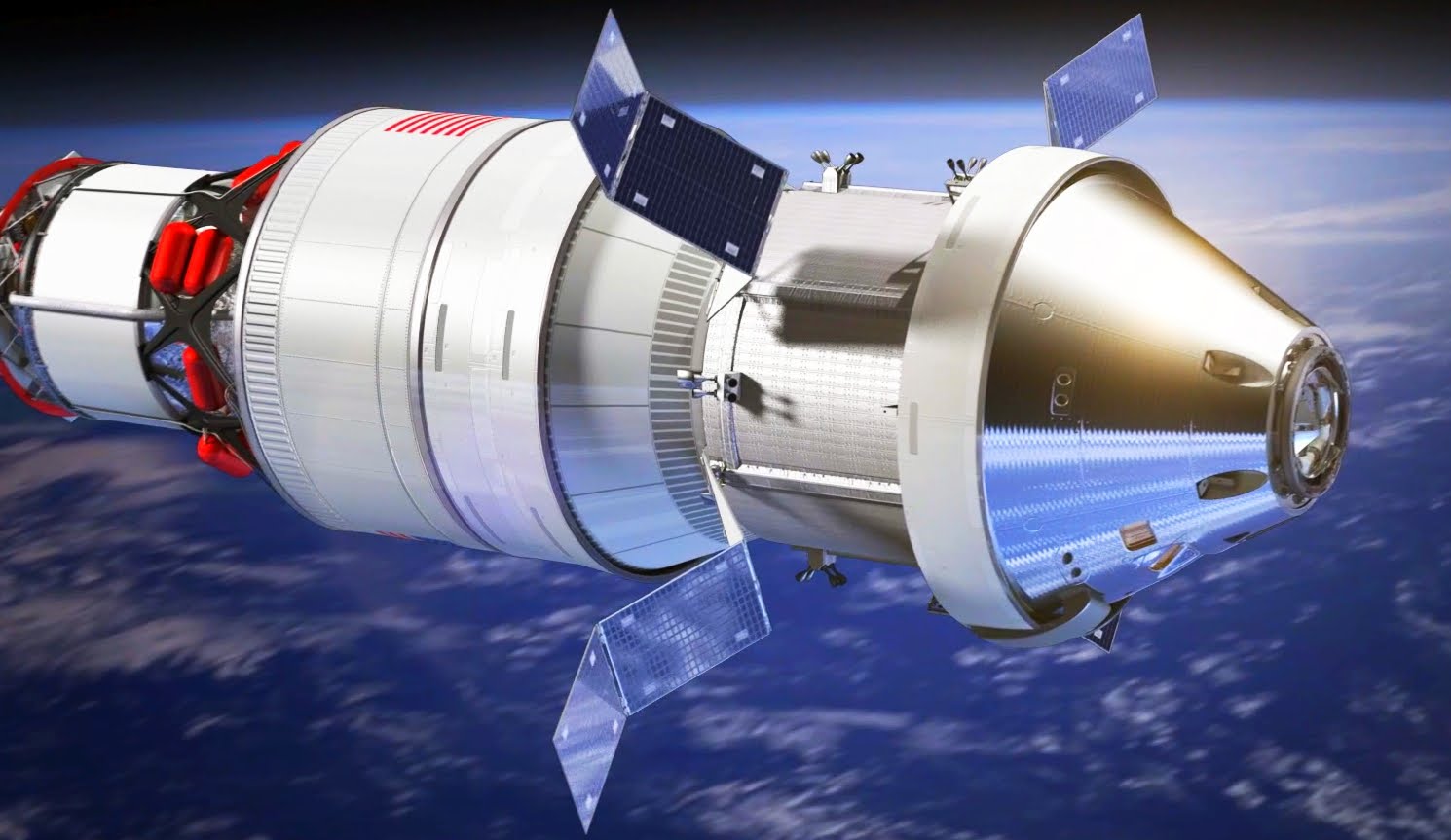Orion & SLS playlist:
more at
Revised 3-D animation depicting the EM-1 spaceflight (an earlier version was released in 2013).
Public domain film from NASA. I have added music created by myself using the Reaper Digital Audio Workstation and the Independence and Proteus VX VST instrument plugins.
Exploration Mission 1 or EM-1 (previously known as Space Launch System 1 or SLS-1) is the first planned flight of the Space Launch System and the second uncrewed test flight of the Orion Multi-Purpose Crew Vehicle. As of December 2014, the launch is projected to occur September 30, 2018 from Launch Complex 39B at the Kennedy Space Center. As of November 2015 the Orion spacecraft is proposed to spend approximately 3 weeks in space, with 6 days of this in a retrograde orbit around the moon. It is planned to be followed by Exploration Mission 2.
Overview
The Block 1 version of SLS used on this mission will consist of two five-segment Solid Rocket Boosters, four RS-25D engines built for the Space Shuttle program and an Interim Cryogenic Propulsion Stage. EM-1 is intended to demonstrate the integrated spacecraft systems prior to a crewed flight, and in addition, test a high speed reentry (11 km/s) on Orion’s thermal protection system.
On January 16, 2013, NASA announced that the European Space Agency would build Orion’s service module based on its Automated Transfer Vehicle, so the flight could also be regarded as a test of ESA hardware as well as American, and of how the ESA components interact with the American Orion components.
The EFT-1 flight article was consciously constructed in a way that if all the missing components (seats, life support systems) were added, it would not meet the mass target. It was planned that subsequent capsules would be modified to be lighter, based on manufacturing experience.
In January 2015 NASA and Lockheed announced that some components in the EM-1 capsule would be up to 25 percent lighter compared to the previous one. This would be achieved by changes to the primary structure – the EM-1 article it would be welded together from three panels for the cone, as opposed to 6 panels used for the EFT-1 article. The total number of welds was reduced from 19 to 7, thus saving the additional mass of the weld material. Other savings would be due to revisiting its various components and wiring. For EM-1 the capsule will be outfitted with complete life support system and crew seats, just no crew…
PRESSURE VESSEL
WELDING PROGRESSES
AT MICHOUD FACILITY
Lockheed Martin engineers at NASA’s Michoud Assembly
Facility in New Orleans, began welding the Orion
spacecraft pressure vessel for Exploration Mission-1 on
Sept. 5.
The pressure vessel is the primary structure of Orion’s
crew module…
This is the third Orion pressure vessel built, following the
ground test vessel and the vessel for Exploration Flight
Test-1 (EFT-1). Through collaborations across design and
manufacturing, the team reduced the number of welds
from 33 on the first pressure vessel to seven on the
current one, saving about 700 pounds of mass…
Exploration is the name of the NASA directorate that has overall responsibility for developing new launch vehicles and spacecraft.
The Lockheed Martin-built manned spacecraft component of the system, named the Orion Multi-Purpose Crew Vehicle (MPCV, formerly called the Crew Exploraton Vehicle, CEV), was originally intended to be operational by 2014 (with “boilerplate” tests by 2009 and unmanned flight tests of the actual vehicle by 2012), and to be capable of carrying astronauts to the moon by 2020.
The first unmannned Orion test flight, Exploration Flight Test 1 (EFT-1), is now targeted for early 2014. Because the SLS Shuttle-replacement launch vehicle will not be ready until almost four years later, this test will ride on a Delta IV-Heavy launch vehicle.
Tests of the Orion Boilerplate Test Article (BTA) began in 2011. Testing of the more advanced Orion Ground Test Article (GTA) are expected to begin at Langley Research Center in late 2012 or early 2013. Construction of the first Orion for unmanned orbital tests began in September, 2011. The SLS launch vehicle for Orion is not expected to fly until 2017 at the earliest…

